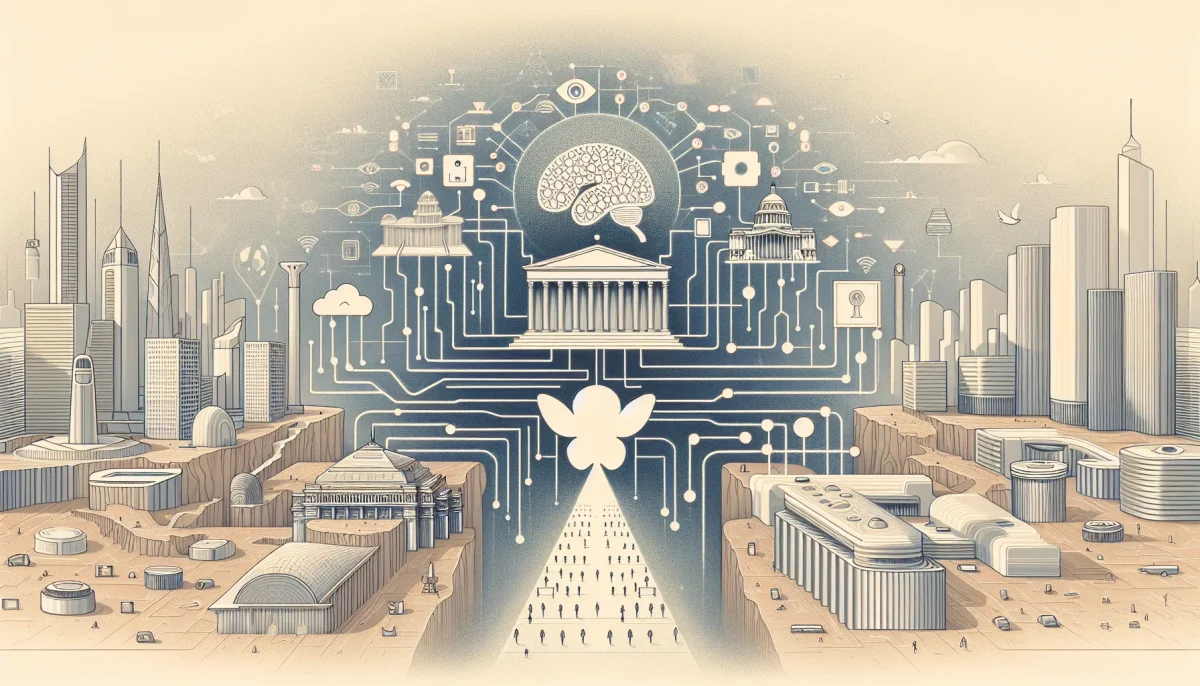The world of artificial intelligence is evolving at a breakneck pace, with new developments and breakthroughs emerging almost daily. From image generation leaderboards to predictions of superintelligence, the AI landscape is shifting dramatically, promising to reshape our world in ways we can barely imagine.
China Leads in Video Generation
Recent updates to the artificial analysis arena video leaderboard have shown a significant shift in the AI video generation landscape. China has taken the top spot with min maxhuluai, boasting an impressive Elo of 1,092 and a win rate of 67%. This development underscores China’s growing dominance in the field of AI-powered video creation.
Hot on China’s heels is Genmo AI’s mokey model, which has claimed the silver medal despite being released just last week. This rapid ascent highlights the fierce competition and rapid innovation occurring in the open-source video generation model space.
Runway, a well-known player in the field, now sits at number 3 with an Elo of 1,051 and a win rate of 61%. This reshuffling of the leaderboard demonstrates the dynamic nature of AI development, where new models can quickly rise to prominence.
The Mysterious Red Panda Model
Adding intrigue to the AI arena, a new image generation model known as “Red Panda” has emerged, taking the top spot on the artificial analysis image arena leaderboard. What makes this development particularly interesting is the mystery surrounding its origin. Unlike other models on the list, Red Panda is not associated with any known company.
Speculation is rife about the model’s creators. Some experts suggest it might be the work of a Chinese tech giant like Baidu or Tencent, given China’s recent successes in video generation. Others wonder if it could be a surprise release from OpenAI, considering Sam Altman’s recent hints about upcoming tools.
Regardless of its origin, Red Panda’s performance is turning heads. With an arena win rate of 79%, it significantly outperforms other models, including the recently released Black Forest Labs Flux 1.1 pro. This leap in capability suggests that image generation technology is advancing even faster than many had anticipated.
Apple’s AI Integration
Apple has taken a significant step into the AI arena with the release of iOS 18.1, which includes Apple Intelligence. While the full range of features is only available on iPhone 15 and above, this move signals Apple’s commitment to integrating AI capabilities into its ecosystem.
Users are encouraged to update their devices to access these new AI features. Early reports suggest a mix of practical applications and more gimmicky features, but the overall reception appears positive. This development marks an important milestone in bringing AI capabilities to mainstream consumer devices.
Elon Musk’s AI Predictions
In a recent interview, Elon Musk shared his thoughts on the rapid advancement of AI technology. According to Musk, AI is improving at a rate of at least 10 times per year. He predicts that within a year or two, AI will be able to perform any task a human can do, and within three years after that, it will match the combined intelligence of all humans.
While Musk’s track record with predictions has been mixed, his statements align with a growing consensus in the AI community about the accelerating pace of development. Musk’s predictions, if accurate, suggest we are on the cusp of a profound transformation in human-AI interaction.
Ray Kurzweil’s Optimistic Outlook
Futurist Ray Kurzweil offers an even more optimistic timeline for AI advancement. He maintains his prediction, first made in 1999, that artificial general intelligence (AGI) will be achieved by 2029. Kurzweil goes further, suggesting that within 5 to 10 years, we may be able to “back up our brains” to ensure our consciousness survives accidents.
Kurzweil’s vision extends to radical life extension, proposing that advances in AI and biotechnology could make it “very hard to imagine how you could die” for those who can “hold on” for the next 5 to 10 years. While these predictions may seem far-fetched, they highlight the potentially transformative impact of AI on human longevity and consciousness.
X.AI’s Massive Valuation and Supercomputer
Elon Musk’s AI venture, X.AI, is reportedly in talks to raise funding at a valuation of $40 billion. This astronomical figure, up from $24 billion just a few months ago, reflects the immense potential investors see in AI technology and Musk’s track record in the field.
Part of this valuation likely stems from X.AI’s investment in what is claimed to be the world’s largest supercomputer. This massive computing infrastructure is crucial for training frontier AI models, highlighting the importance of computational power in the AI arms race.
Meta’s AI Ambitions
Meta (formerly Facebook) is not sitting on the sidelines in the AI race. The company is reportedly working on Llama 4, set for release early next year, which aims to push towards “autonomous machine intelligence.” Meta’s vision includes AI systems that can not only plan but also evaluate decisions in real-time and adjust when conditions change.
In addition to language models, Meta is developing its own AI search engine to reduce reliance on Google and Microsoft. This move reflects a broader trend of tech giants seeking to control more of the AI stack and reduce dependencies on competitors.
Google’s Project Astra
Google is working on Project Astra, an ambitious AI initiative aimed at creating experiences where AI can see and reason about the world around us. The company aims to ship these experiences as early as 2025, potentially revolutionizing how we interact with AI in our daily lives.
This project represents a significant leap forward in AI capabilities, potentially allowing for more natural and context-aware interactions between humans and AI systems.
The Future of AI: Superintelligence and Massive Investment
SoftBank CEO Masayoshi Son has made bold predictions about the future of AI, suggesting that artificial superintelligence (ASI) that is 10,000 times smarter than humans will arrive by 2035. To achieve this, Son estimates a need for 400 gigawatts of AI data centers, 200 million chips, and a staggering $9 trillion in capital investment.
While these figures may seem astronomical, they underscore the massive scale of investment and infrastructure that leading figures in the tech industry believe will be necessary to achieve transformative AI capabilities.
Conclusion
The rapid advancements in AI technology across various domains – from image and video generation to language models and superintelligence predictions – paint a picture of a future where AI is deeply integrated into every aspect of our lives. While the exact timelines and capabilities remain subjects of debate, the massive investments and intense competition in the field suggest that we are on the cusp of a new era in human-AI interaction. As these technologies continue to evolve, they promise to reshape our world in profound and potentially transformative ways.
Frequently Asked Questions
Q: What is the current state of AI video generation technology?
According to recent leaderboards, China is leading in AI video generation with models like min maxhuluai. Open-source models like Genmo AI’s mokey are also making significant strides, demonstrating rapid progress in this field.
Q: Who is behind the mysterious “Red Panda” AI model?
The origin of the “Red Panda” AI model, which has topped image generation leaderboards, is currently unknown. Speculations range from it being a product of Chinese tech giants to a potential surprise release from OpenAI, but no definitive information is available yet.
Q: What are Elon Musk’s predictions for AI development?
Elon Musk predicts that AI is improving at least 10 times per year. He believes AI will be able to perform any human task within 1-2 years and match combined human intelligence within 3 years after that.
Q: What is Meta’s approach to AI development?
Meta is working on Llama 4, aiming for “autonomous machine intelligence.” They’re also developing an AI search engine to reduce reliance on Google and Microsoft. Their focus is on AI systems that can plan, evaluate decisions in real-time, and adjust to changing conditions.
Q: How much investment does SoftBank’s CEO think is needed for superintelligent AI?
Masayoshi Son, SoftBank’s CEO, estimates that achieving artificial superintelligence by 2035 would require 400 gigawatts of AI data centers, 200 million chips, and approximately $9 trillion in capital investment.








